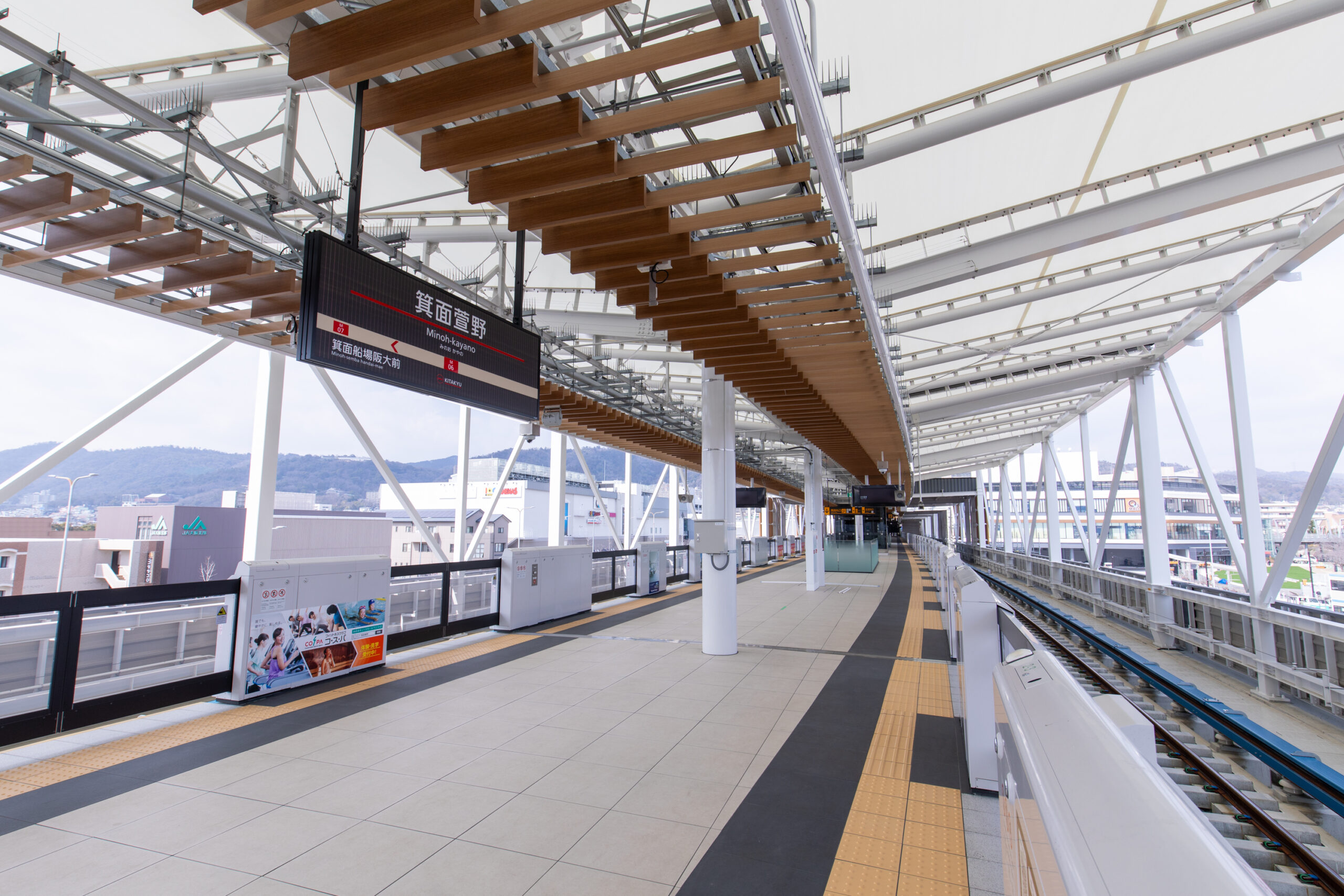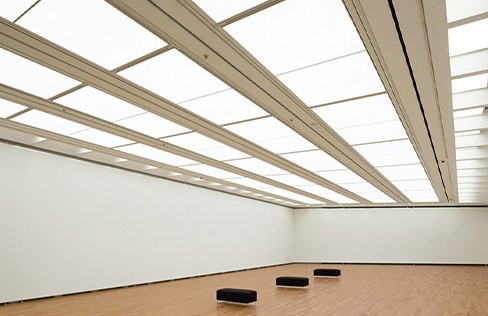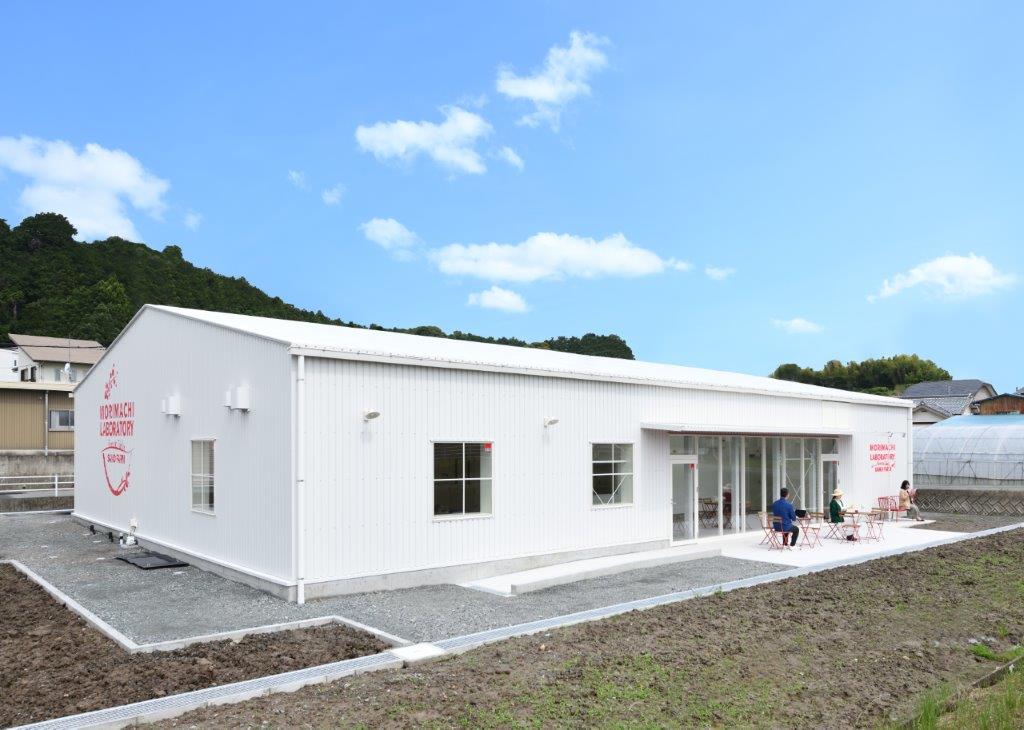

Taiyo Kogyo Column
Taiyo Middle East contributed to the success of the Dubai International Expo 2020 with the construction of the Al Wasl Dome.
2024.03.13
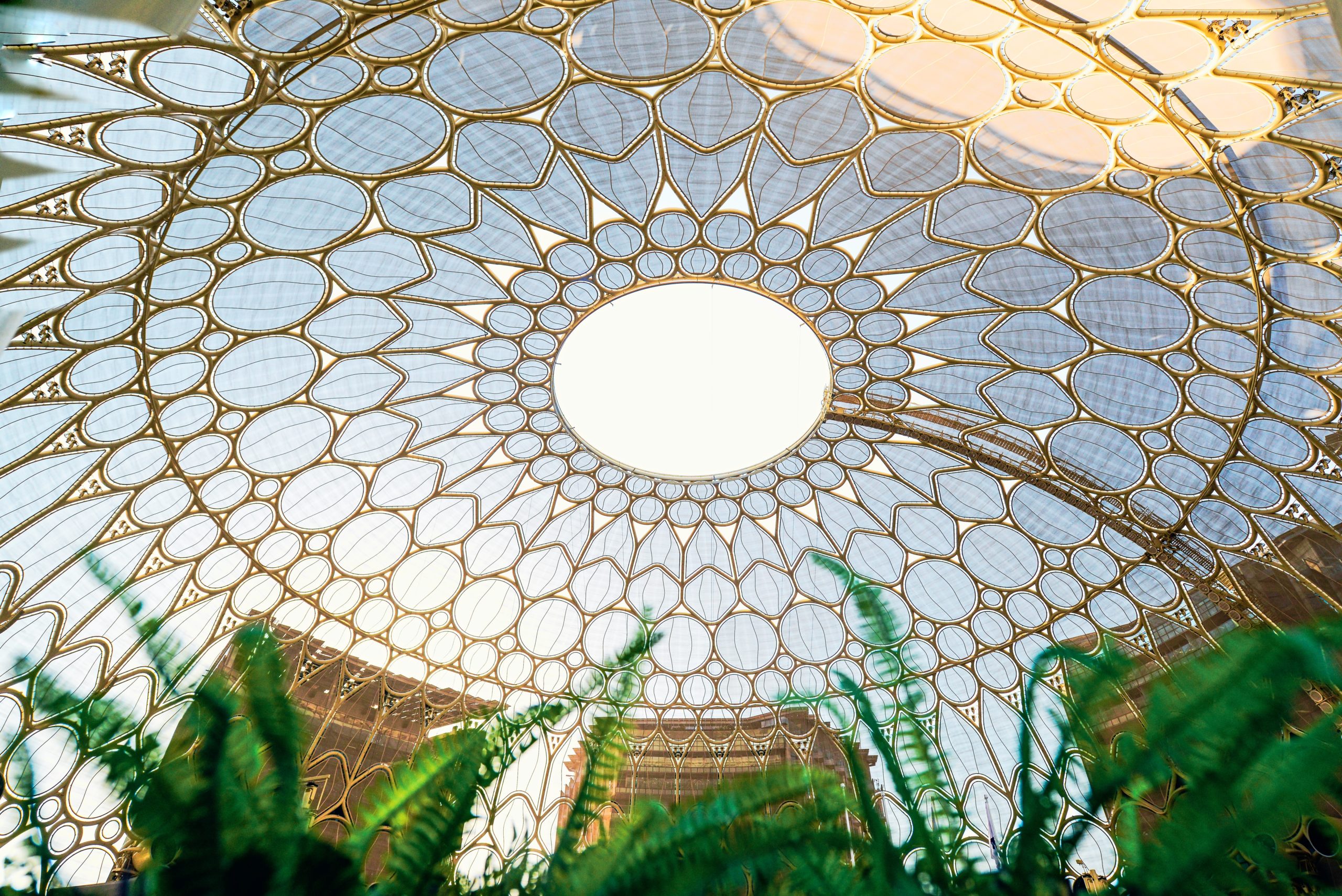
The Dubai International Expo 2020 is the first Expo to be held in the Middle East and Africa region.
The Al Wasl Dome is the architectural symbol of the UAE’s development and the nucleus of the big event.
With a beautiful exterior designed in a traditional Islamic style, the dome also functions as a screen for 3D projection mapping.
The event was enlivened by a power that overwhelmed all who saw it.
Taiyo Middle East (headquartered in the UAE, hereinafter TME), a Taiyo Kogyo Group company, played a central role in this construction.
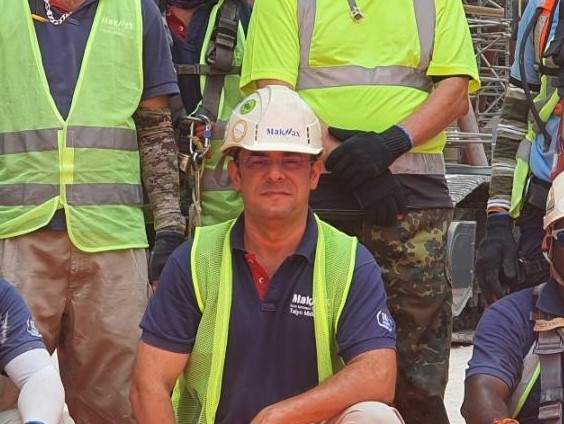
World-class scale dome. The impressive architecture that adorns the Expo began with the development of the membrane materials by multinational members of the Taiyo Kogyo Group.
The Dubai International Expo 2020 is an important event for the UAE’s national prestige.
There was a demand for visuals that leave a strong impression so that the Expo will remain in the memories of VIPs visiting from all over the world and people watching through the screen, and also in history.
Ahmad Dalain was on site to direct the construction of the “Al Wasl Dome,” which was expected to play a major role in the project.
Dalain:
Al Wasl Dome is 70 m high and 130 m wide, big enough to accommodate two very large airplanes. It was important for the panel membrane to not only serve as a roof, but also as a screen for projecting 3D projection mapping. Our mission was to use a membrane material that would beautifully reproduce images on a screen covering a vast area of approximately 16,000 ㎡.
The development of the panel membrane began with the cooperation of American architects, Japanese staff at TME, and staff at the headquarters. The inspiration came from old movie theater screens. Screens were coated with a metallic silver coating to enhance reflection and project beautiful images, which is why they are called “silver screens. We were convinced that a similar material using modern state-of-the-art technology would be suitable for the dome’s membrane, given its compatibility with the light of projection. We proposed and tested mesh membranes of various colors and performance, and finally decided on a beige PTFE (fluorine-coated glass resin) mesh. In addition, in order to create a design that expressed the flow of water from top to bottom, curved welded lines were adopted without the use of steel frames or other components.
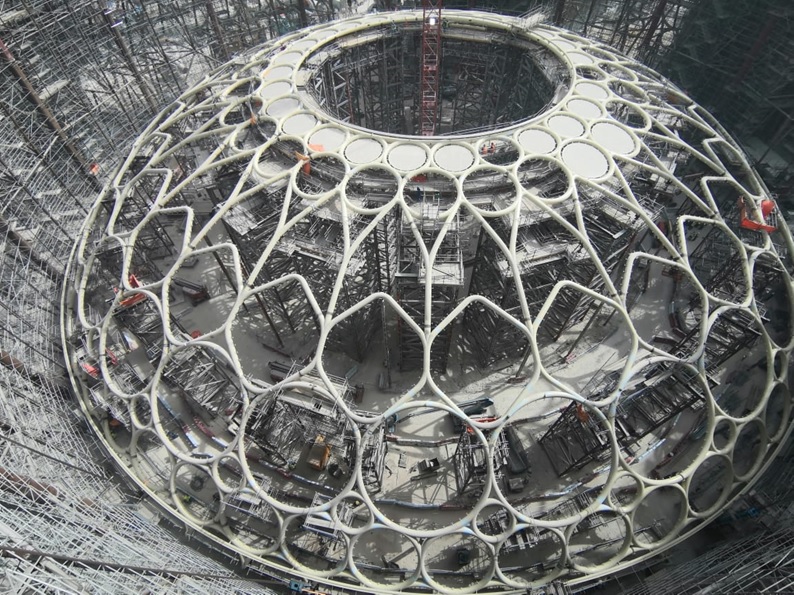
The dome is approximately 70 meters high.
How to make something great on time while prioritizing the safety of working at heights.
Despite the difficult conditions, we utilized our group resources and cooperated with MakMax Australia in the development of the frame material.
Dalain:
Our first priority in our work is always to ensure the safety of our workers. This particular installation involved installing 631 panels at a height of 70 m, a particularly high altitude. Making the installation even more difficult was the presence of several skyscrapers and hotels in the immediate vicinity of the dome.
The aluminum framing material developed for the project contributed significantly to achieving the ease of construction that met these requirements. The joint designer was MakMax Australia, a member of the Taiyo Kogyo Group. This company’s strength is its flexibility to work outside the box, and we thought they would be a good fit for this project because it was a new approach, with large panels, up to 10 meters in diameter, being pulled up to a height of 70 meters for installation. And MakMax Australia met our requirements in an outstanding manner.
Steel frames are generally used for framing materials, but due to their weight, we thought they would not be suitable for this installation, considering the efficiency of raising, worker safety, and consideration for the adjacent high-rise building. By using aluminum, we were able to make it extremely lightweight and strong.
And this frame did not only make the job safer and faster, it also saved the budget. The very thin frame allowed for a gap between the membrane panels and the primary steel frame, giving the design the appearance that the membrane panels are floating. This also makes for an impressive image when projection mapping is projected.
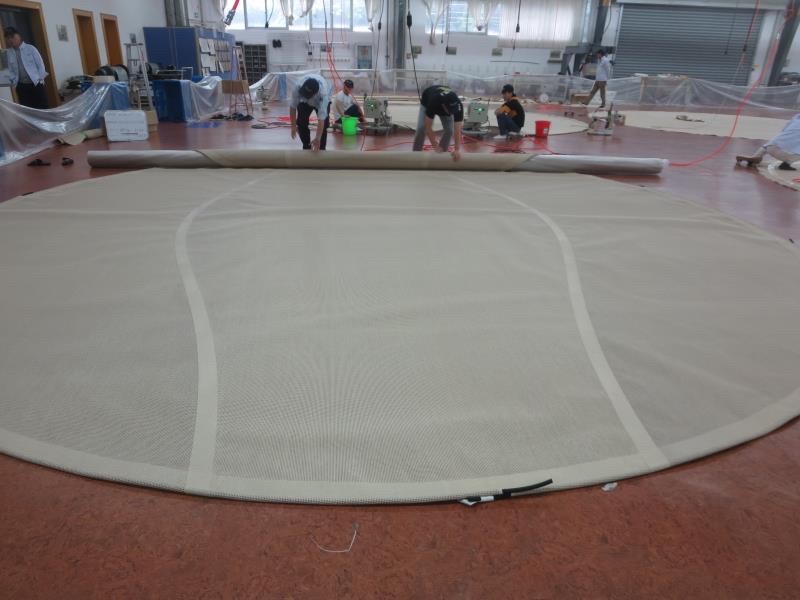
Mockups are manufactured at the Mizuho Factory in Japan. The manufactured parts are transported to Dubai, assembled on site and carefully verified, until we can be sure it is "100%".
The panel membrane and frame materials were mostly determined through trial and error by the staff.
However, this is just the beginning of the road to completion.
A sample mock-up, is manufactured and assembled on site. After careful and detailed verification, when you are confident that “more than 100%” has been achieved, mass production begins at the Shanghai Factory.
Dalain:
The mock-up was designed and manufactured at the Mizuho Factory in Kyoto, Japan. Several different colored membranes and aluminum frames were produced, sent to Dubai, assembled, and actually projected light to verify which color reproduced the most beautifully.
Fine-tuning and testing were repeated. After much hard work, the materials to be used were decided, but the next challenge was to mass-produce the product with the same quality.
Production of the panel membranes was to take place at the Shanghai Taiyo Factory. Here, ensuring quality and its uniformity, as well as the production schedule, were key issues.
First, when the first panel membrane was completed, we invited the architect from the U.S. to check the quality of the membrane together and reached an agreement. Second, we asked the Japanese staff who participated in the membrane quality control to be stationed in Shanghai for strict quality control.
Without the certainty that we would be more than 100% satisfied, a large project such as this would have a major impact on the schedule. The fact that we were able to deliver the project on time without major mistakes was due to the delicate progress management of the engineers and managers, the safety awareness of the workers, and their work ethic that allowed them to leave no stone unturned.
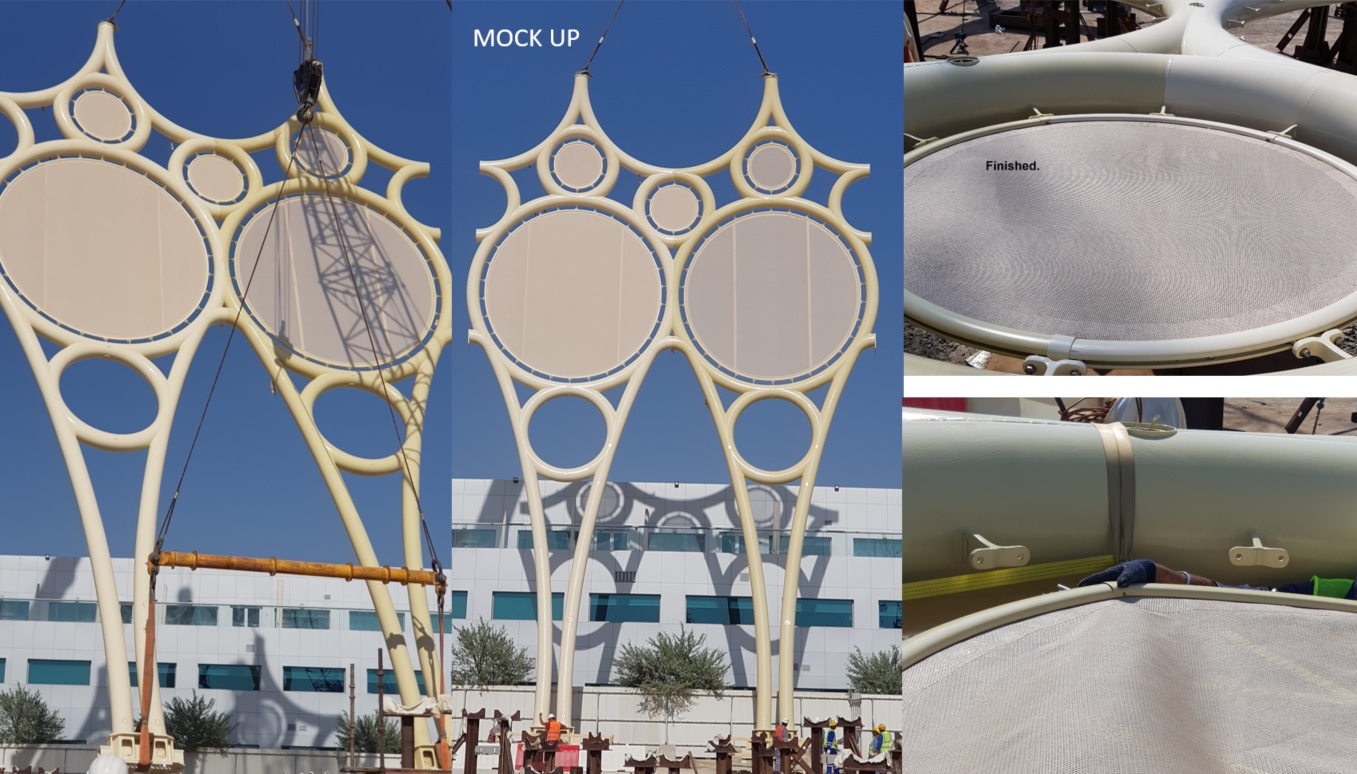
The team's efforts to date are taking shape. Finally, the first panel membrane was lifted.
Dalain is accustomed to conducting large and very large projects.
Even he had his anxieties about the Al Wasl Dome project some days.
In a fixed schedule, a mistake in construction methods can affect a large and varied number of things.
What was the construction method that greatly reduced the man-hours and hazards involved?
Dalain:
Since it would be difficult to extend this project, we were also concerned that any problems would significantly affect the schedule, budget, or overall feasibility of the project.
The unusual construction method employed was to protect schedules and human lives. In most general projects, “ground assembly” is used to assemble as many parts as possible on the ground in order to reduce man-hours at high elevations. However, this project was particularly tall and large in area, so it was anticipated that conventional construction methods would be difficult and take an enormous amount of time.
Therefore, this time, instead of groundwork, the panel membrane was attached to aluminum frames around the perimeter of the panel, and the frames were temporarily fixed to each other to maintain rigidity while being lifted up to a predetermined position. This method greatly reduced the enormous amount of man-hours and the danger of working at heights.
As I looked up at the assembled frames, I imagined how the completed project will turn out.
Al Wasl Dome is a tremendously large building that can be seen from 10 kilometers away. People gather to see it, and all who visit will be impressed by its scale and beautiful design. When projection mapping is projected on it, it takes you to another world, and many people will marvel at it. Residents of the surrounding area will be proud of this historic building and will continue to hold diverse events here, bringing smiles to the faces of people from all over the world and from all walks of life. I became more and more excited.
Finally, the day of construction. We checked the weather forecast several weeks in advance and chose a day that was predicted to be mostly windless.
I still remember the moment when several panels were assembled on the ground and lifted into the air. Praying that strong winds would not blow, I looked up to see the large panel membrane, about 10 meters in diameter, slowly rising. We arrived at the site and began the process of installing them.
When I installed the seventh panel, I could hear classical music.
Growing up, I always wanted to be a conductor. Violin, double bass, cello, clarinet, trumpet, drums…. I dreamed of uniting diverse sounds to create grand harmonies.
I believe that I became a “conductor” of architecture, a project director, after working as an engineer. I unite many players from Australia, Japan, China, and the UAE to assemble a magnificent structure while feeling the atmosphere of the place. The whole process is thrilling and fun. For me, a very large project feels like a music concert.
When I heard the concert music for this project as well, I was confident of its success and felt as if a weight had been lifted off my shoulders so that I could enjoy it. I was grateful to all and felt fortunate to have had a good team. I remember that all the clients and stakeholders were impressed and admired the project.
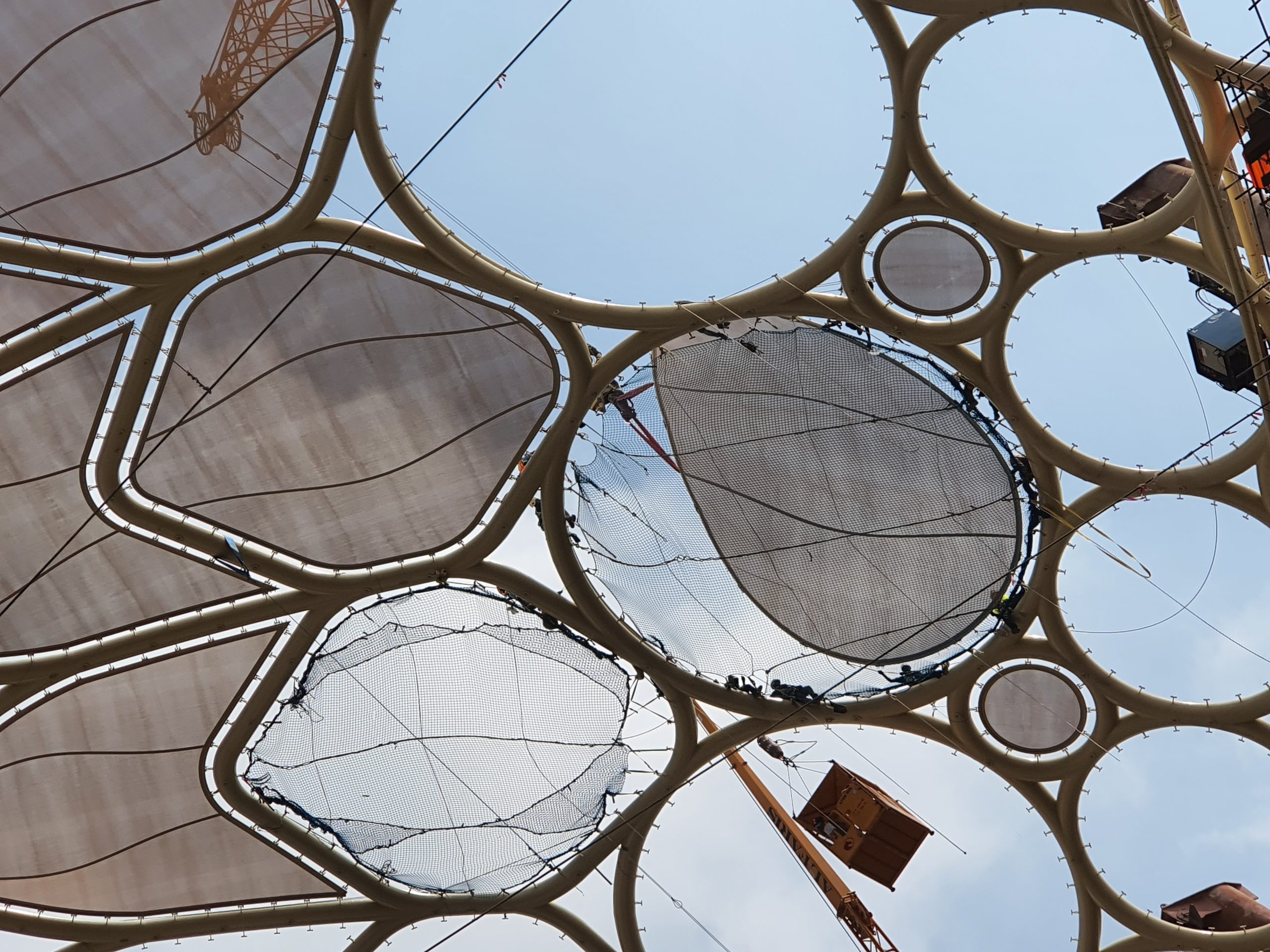
The dome was completed without incident and the delivery date was met.
The day of completion will be marked by the united efforts of a large number of staff members from across the country.
Here are the reasons why the Taiyo Kogyo Group is recognized worldwide.
Dalain:
The biggest challenge of this mission, in my opinion, was to deliver the product “safely” and “on time.
In order to protect both of these, we have developed materials, conducted repeated tests, and ensured that we have sufficient human resources and time for quality control.
Now that everything is finished and we have cleared them, I am very proud, but once again I realize how wonderful the Taiyo Kogyo Group is.
I believe that the people of the Taiyo Kogyo Group have two distinctive characteristics.
We are committed to the highest quality in the industry” and “on-time and on-promise delivery. I believe that by maintaining these principles, we have been able to continue to receive orders for world-renowned projects, even under tight deadlines. This is true for our group companies and human resources around the world. In this case, MakMax Australia’s courageous engineers rethought the project from the ground up and developed new ideas to enhance the constructability of the conceptual design, and Shanghai Taiyo manufactured the challenging product that was developed. The quality control team, Taiyo Kogyo’s quality department, performed uncompromising checks during the final fabrication.
As a side note, some people in Dubai call me “Ahmad Taiyo,” and I think it is because of the central role I have played in various projects since joining TME in 2005 that I am recognized as a member of the Taiyo Group there. And I myself am very proud to be called so.
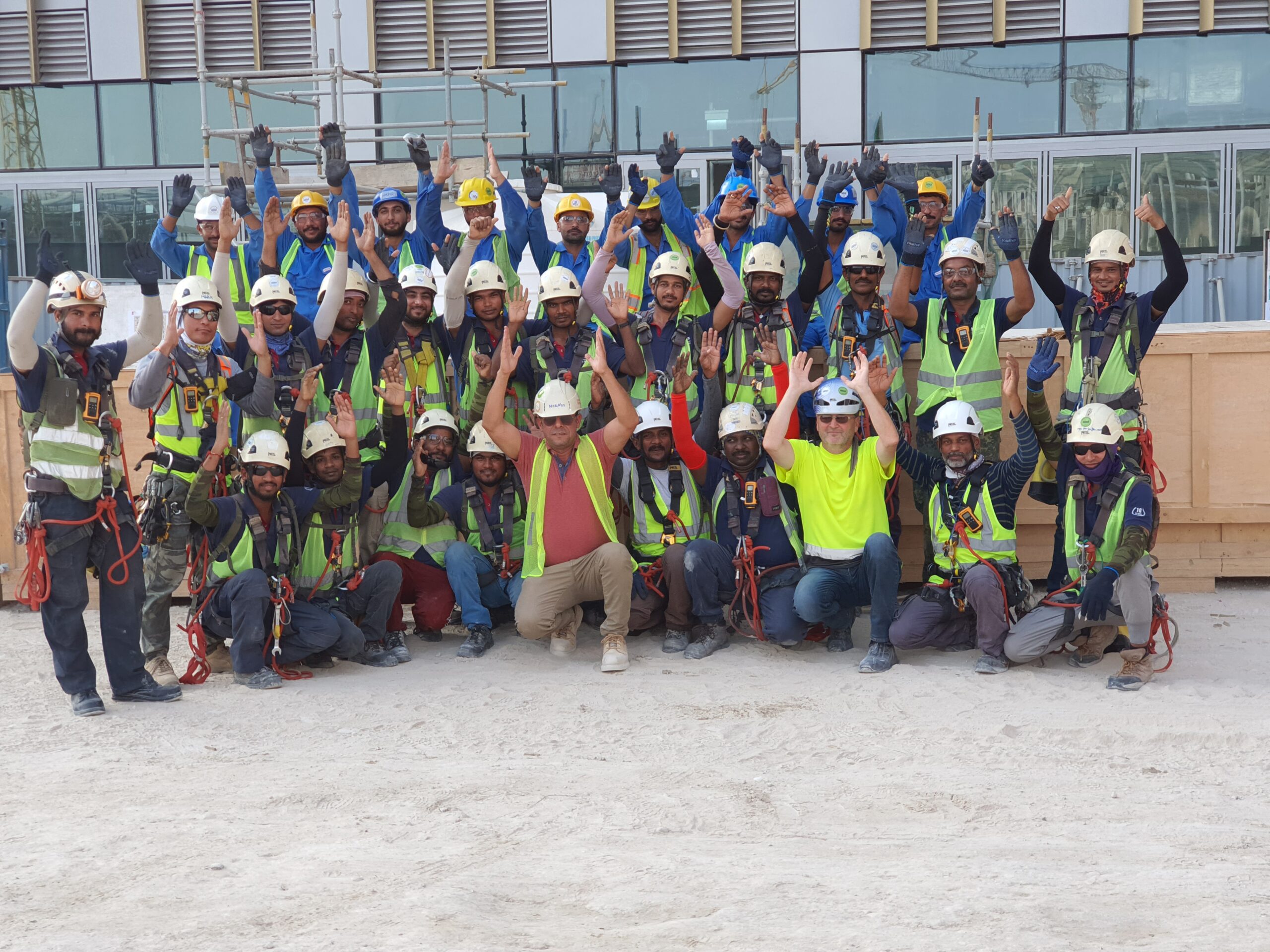
Taiyo Kogyo Group has been involved in numerous legacy buildings. The "Al Wasl Dome" will surely be a legacy for the future.
Dalain has been an engineer for 25 years, and a member of TME for about 20 years.
He has been involved in a number of architectural projects, but what does he think of this project?
Dalain:
I have been involved in the construction of many prominent stadiums and pavilions in the Middle East region, including the King Abdullah Sports City Stadium and the Haramain High Speed Rail in Saudi Arabia, the Hazzaa bin Zayed Stadium and the Formula 1 Grandstand at the Yas Marina Circuit in the UAE.
I have learned a lot from the Taiyo Kogyo Group through these projects.
We respect all workers around the world and make safety our top priority, never compromise on quality, deliver on time, and spend a lot of money and time to ensure these things.
Not just anyone can do this, but the Taiyo Kogyo Group has continued to practice this for many years, which is why all of our projects have been successful, and as a result, we have achieved the world-class status we have today.
Of all of Taiyo Kogyo’s projects to date, the most impressive to me is the Tokyo Dome, completed in 1988. It is a legacy building that opened up a new dimension in membrane structural architecture, both in scale and design, and is a symbol that took Taiyo Kogyo to an even higher level.
I am proud to say that the Al Wasl Dome, which I worked on this time, has become a legacy building of the present and future, not only because of its scale and design, but also because of the new construction methods used, the fact that it was the main venue for the Expo, and the use of projection mapping.
The Taiyo Kogyo Group has been a world leader in membrane structures for 100 years. From the Tokyo Dome to the Al Wasl Dome to the next legacy, the technology and spirit of Taiyo Kogyo will be passed on while incorporating new technologies such as AI.
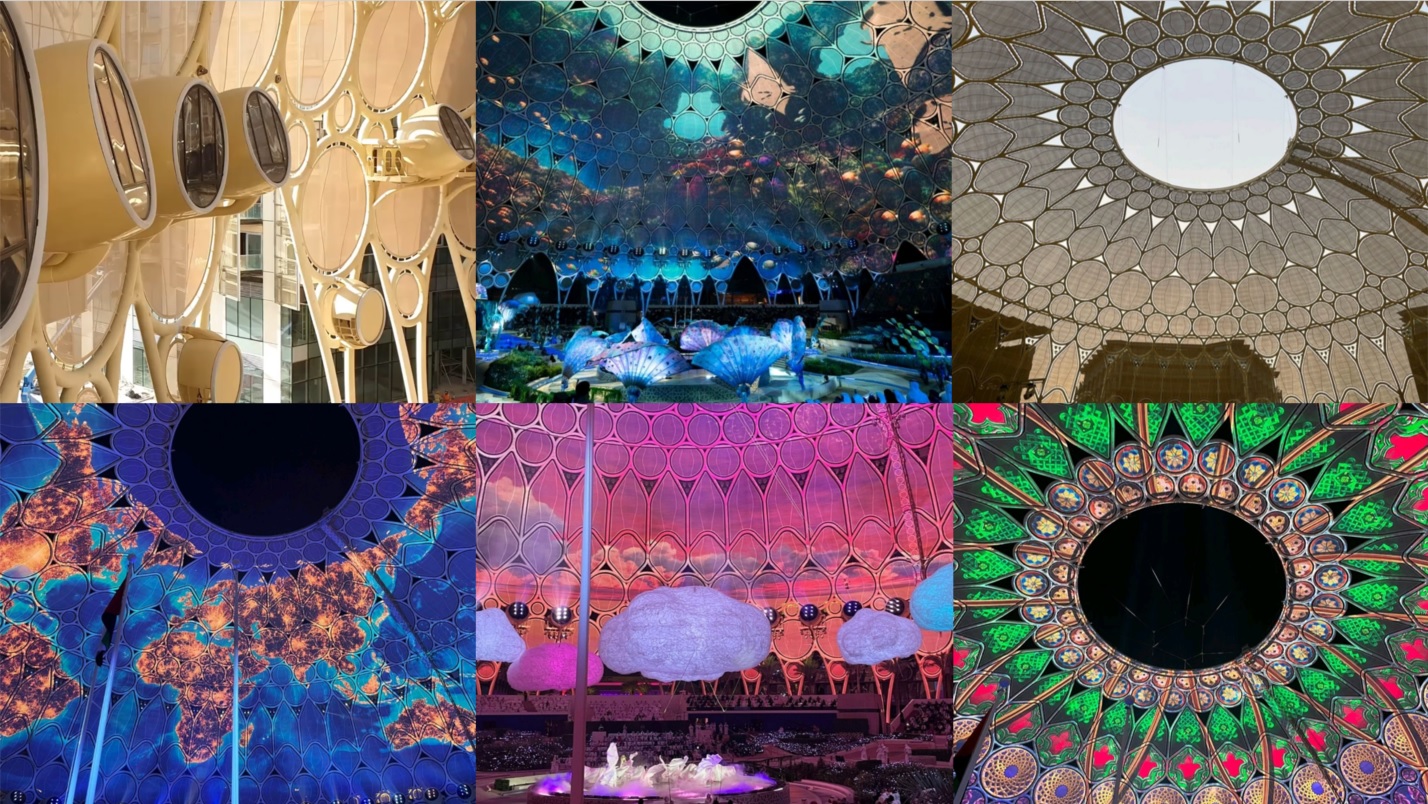
Related Articles
- TOP>
- Taiyo Kogyo Column>
- Taiyo Middle East contributed to the success of the Dubai International Expo 2020 with the construction of the Al Wasl Dome.






